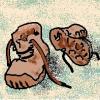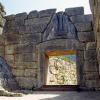Направи си сам - установка за сплетени частици
-
Последна активност
-
- 9 мнения
- 69 прегледa
-
ПостИстина - що е то и един синтезен обход по психологическите и социалните му аспекти. 1 2 3 4
От ramus, in Психология и Логика
- 91 мнения
- 1509 прегледa
-
- 83 мнения
- 2491 прегледa
-
- 806 мнения
- 22946 прегледa
-
- 7 мнения
- 901 прегледa
-
-
Последно разглеждащи 0 Потребители
- No registered users viewing this page.




Препръчано мнение
Напиши мнение
Може да публикувате сега и да се регистрирате по-късно. Ако вече имате акаунт, влезте от ТУК , за да публикувате.